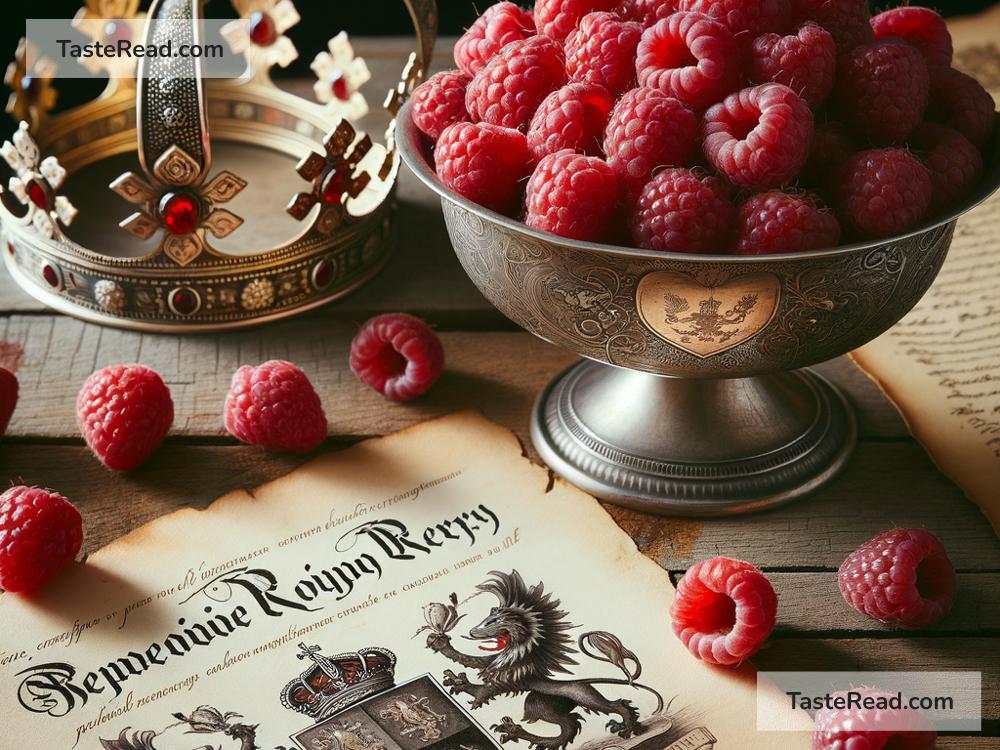The Curious History of Raspberries and Royalty
Raspberries—those small, juicy clusters of sweet and tangy flavor—are more than just a tasty treat. They have a rich and fascinating history tied to royalty, gardens, and the passage of time. While today we might see raspberries as a common fruit, their journey through history tells a tale of luxury, fancy feasts, and even medical uses.
Where Do Raspberries Come From?
Raspberries have been around for thousands of years. They’re native to Europe, Asia, and North America, growing in sunny areas and along forest edges. The scientific name for the red raspberry is Rubus idaeus, which means “bramble bush of Ida.” According to legend, this name comes from Mount Ida in Crete, where they were supposedly discovered by ancient Greeks.
While raspberries may have started as wild fruits picked by early humans, they didn’t stay humble for long. As civilizations grew and cultures began cultivating gardens, raspberries gained attention from royals and nobles.
Royal Gardens and Raspberry Love
Raspberries became especially popular in Europe during the Middle Ages. By the 13th century, raspberries were being cultivated in royal gardens, indicating how special they were considered. At the time, growing fruits and vegetables wasn’t just about food; it was also about status. Anyone could gather wild berries, but cultivating the perfect raspberry bush in a private garden showed off wealth, skill, and refinement.
King Edward I of England is said to have been an early admirer of raspberries. During his reign in the late 1200s, raspberry bushes started appearing in prestigious gardens across England. As these gardens grew, raspberries became not just food but a symbol of elegance and luxury.
By the Renaissance, raspberries were firmly tied to royalty. The fruit was used in extravagant meals and desserts, turning banquets into colorful feasts. Recipes called for raspberries mixed into tarts, cakes, and jams—an experience only the wealthiest could enjoy, since they were hard to grow and transport.
Raspberries as Medicine
Beyond their delicious flavor, raspberries were also believed to have magical healing powers. Medieval physicians thought raspberries had medicinal benefits and used them in treatments for various ailments. Raspberry juice was often mixed into herbal medicines or applied directly to wounds, as people believed it could heal and soothe.
In the court of royalty, plants with medicinal properties were highly valued. Royal doctors frequently sought out raspberries for their supposed health benefits. Even Queen Elizabeth I of England was rumored to enjoy raspberries as part of her diet, helping make the fruit even more iconic.
Raspberries in Art and Symbols of Wealth
Over time, raspberries appeared not just in gardens and kitchens but also in art. Portraits and paintings from the Renaissance period occasionally featured raspberries—either in still-life works or as part of royal banquets. Rich families commissioned these paintings to show off their prosperity, and raspberries were often included as a symbol of exotic fruits and luxury.
Raspberry bushes themselves were also symbols of beauty and abundance. Nobles took pride in their well-manicured gardens, often showcasing colorful raspberry plants among roses and other prized flora. To own a garden with raspberries was to say you appreciated both nature and sophistication.
Raspberries Travel the World
As European exploration grew, so did the raspberry’s reach. By the 17th century, raspberries were taken across seas to faraway lands. English settlers brought raspberry plants to North America, where indigenous people already had their own wild varieties of raspberries growing.
The fruit adapted well to new climates and became popular not just among settlers but also in local farming communities. Over time, raspberries spread to countries like Australia and New Zealand, allowing people worldwide to enjoy this royal fruit.
Raspberries for Everyone
By the 19th century, cultivation techniques improved, and raspberries became easier to grow and transport. They were no longer limited to royal gardens or special banquets. Farmers started growing them on a larger scale, making them available to everyday people.
Soon, raspberries appeared in pies, jams, syrups, and even sparkling drinks. What was once considered an exclusive fruit for kings and queens became a part of daily life for everyone. However, raspberries have never lost their connection to elegance. Even today, raspberries are often associated with luxury desserts and high-end recipes, giving them a touch of their royal past.
The Legacy of Raspberries
The curious history of raspberries is a tale of transformation. From wild bushes on Mount Ida to royal gardens in England and beyond, raspberries have traveled through history with an air of sophistication. They were loved by monarchs, painted by artists, and cherished for their flavor and health benefits.
Today, every time we enjoy a bowl of raspberries or drizzle raspberry sauce on a cake, we’re celebrating a fruit whose journey spans continents, centuries, and royal tables. So next time you pop a raspberry into your mouth, remember: you’re tasting centuries of history wrapped up in one delicious bite!


